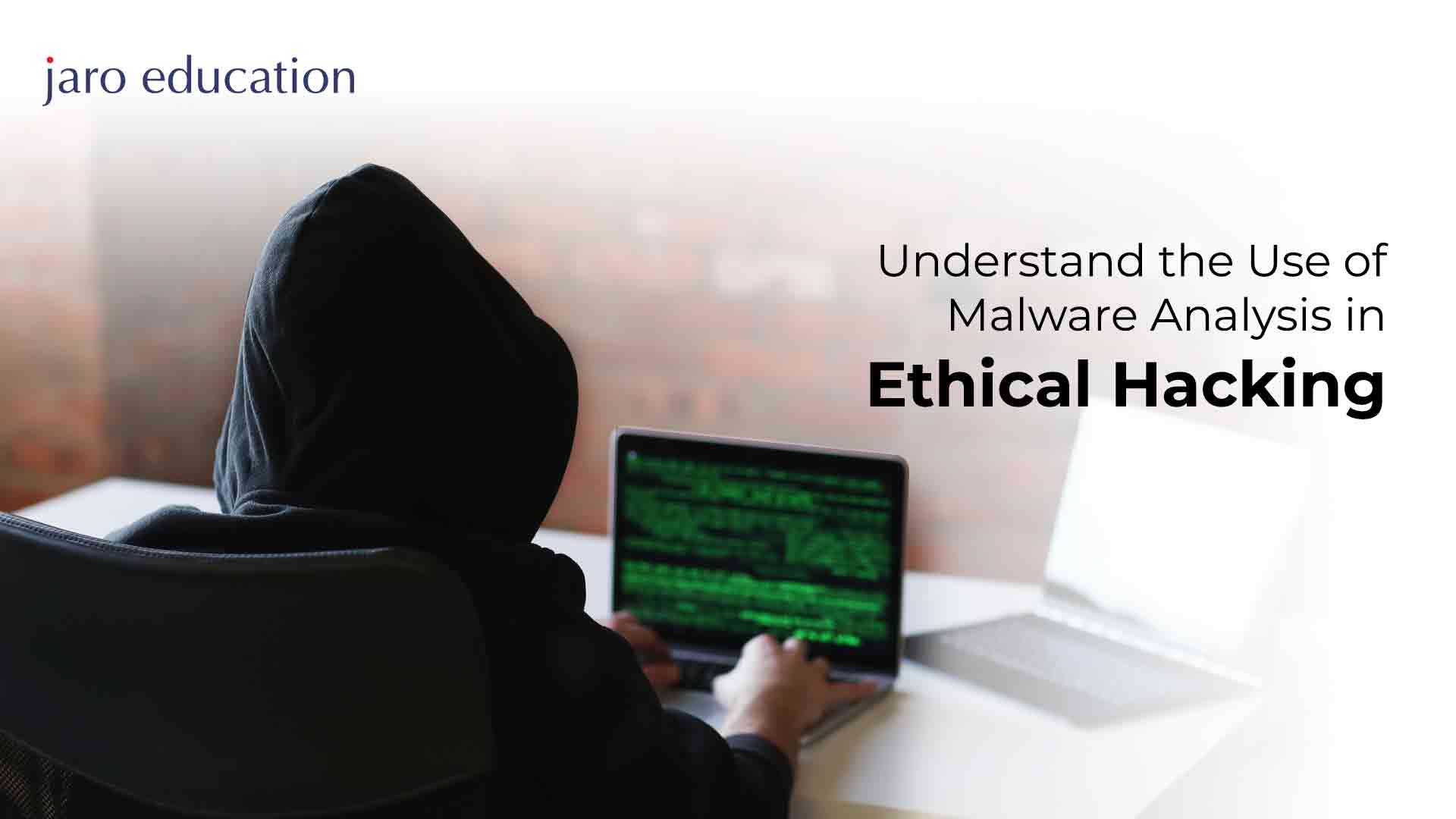Malware analysis is a critical skill for ethical hackers who want to understand how malicious software works in order to identify vulnerabilities, mitigate threats, and ultimately protect systems and data from cyber-attacks. Ethical hackers can gain insights into how attackers operate, detect patterns and trends in the threat landscape, and develop effective defence strategies by analysing malware. In this context, malware analysis is a critical tool in the arsenal of ethical hackers responsible for identifying and neutralising security threats to ensure the digital ecosystem’s safety and security.
What is Malware Analysis?
Malware analysis is the process of examining malicious software, or malware, to learn how it works, how it behaves, and what impact it may have. Malware analysis entails dissecting the malware and revealing its inner workings, such as identifying how it infects systems, its command and control mechanisms, and its intended goals. The primary goal of malware analysis is to comprehend the threat’s nature and devise effective countermeasures to reduce the malware’s impact. Malware analysis is an important skill for cybersecurity professionals, particularly ethical hackers and incident responders because it allows them to identify and neutralise security threats while protecting systems and data from cyber-attacks.
Types of Malware
- Virus
- Worms
- Trojan horses
- Ransomware
- Spyware
- Adware
Malware Analysis Techniques
Static Analysis
Disassemblers
Disassemblers, such as IDA Pro, convert the malware’s binary code into readable assembly language, allowing the analyst to examine the code structure in detail.
Debuggers
Debuggers like OllyDbg and Immunity Debugger enable analysts to step through code and identify malicious behaviour.
Hex Editors
To view the hexadecimal values of the malware’s binary code, hex editors such as HxD and Hex Workshop are used.
Dynamic Analysis
Sandboxing
Sandboxes, such as Cuckoo Sandbox and Hybrid Analysis, provide a secure environment where malware can be executed and monitored.
Emulation
Emulation tools, such as QEMU and Bochs, simulate the target system’s hardware environment, allowing malware to execute in a controlled environment.
Virtualisation
Virtualisation software such as VMware and VirtualBox creates a virtual machine where the malware can run and be monitored and analysed by the analyst.
Purpose of Malware Analysis in Ethical Hacking
Malware analysis is an important process that assists ethical hackers in better understanding malicious software in order to identify vulnerabilities, mitigate threats, and ultimately protect systems and data from cyberattacks.
Recognising Malware Behavior
Identifying malware behaviour is one of the primary goals of malware analysis. This process includes analysing the code and processes used by malware to infect systems, spread across networks, and execute malicious payloads. Ethical hackers can develop effective strategies to prevent and contain infections by understanding malware behaviour.
Reverse Engineering
Another important goal of malware analysis is to reverse engineer malware to understand how it was created and functions. Examining the source code, algorithms, and other components of malware to learn about the techniques and tactics used by attackers. This data can be used to create effective countermeasures and defence strategies.
Countermeasure Development
Malware analysis can also be used to create countermeasures to prevent attacks on systems. This entails using the knowledge gained from analysing malware behaviour and reverses engineering to develop patches, updates, and other security measures that can prevent or mitigate malware’s effects.
Vulnerability Analysis
Malware analysis can assist ethical hackers in identifying vulnerabilities in systems that attackers can exploit. Ethical hackers can identify vulnerabilities in strategies that attackers can exploit by examining the code and behaviour of malware. This data can be used to patch vulnerabilities and improve security measures.
Recognising Attackers
Finally, malware analysis can be used to identify the attackers who create and distribute malware. This data can be used to identify and prosecute attackers and develop strategies to prevent future attacks.
Malware Analysis Tools
Malware analysis tools are required for conducting effective and efficient malware analysis. There are numerous tools available, each of which is designed to assist with a specific aspect of malware analysis. Here are a couple of examples:
IDA Pro
IDA Pro is a disassembler tool that is commonly used in malware analysis. It is a powerful tool that can work with various file types and architectures. IDA Pro is a valuable tool for identifying and analysing the behaviour of malicious code due to its user-friendly interface and powerful debugging features.
OllyDbg
OllyDbg is a debugger tool that enables analysts to run and examine malicious code in a supervised environment. Users can use this tool to single-step through the code, set breakpoints, and inspect the contents of registers and memory. OllyDbg is especially useful for understanding how malware interacts with the system and identifying potential points of weakness.
Immunity Debugger
Another useful tool for malware analysis is the Immunity Debugger. This tool is intended to support a wide variety of file formats and architectures and provide a user-friendly interface for interacting with malicious code. Immunity Debugger also includes scriptability and plugin support, making it a valuable tool for automating and streamlining the malware analysis process.
Wireshark
Wireshark is a network analysis tool that is used to capture and analyse network traffic. It is especially useful for analysing malware that runs on a network. Analysts can use Wireshark to capture network traffic and identify patterns of activity that may indicate a malware infection.
So, these are the basic use of malware analysis in ethical hacking, let’s take a dig dive into cyber-security course.
Advanced Professional Certification Programme in Cybersecurity and Ethical Hacking
Combat cyber heists and eliminate security risks. Learn to prevent organisations’ cybersecurity mesh by developing security architecture with India’s top IIT to upskill and transform into well-suited and skilled Cyber Security Experts. Uncover key concepts in cybersecurity, ethical hacking, and their applications to reimagine organisational goals. Investigate IIT’s cutting-edge curriculum, combining theory and capstone projects, case-based learning, and more. Join E&ICT, IIT Guwahati’s ground-breaking Advanced Professional Cybersecurity Certifications and Ethical Hacking to advance your cybersecurity career.
Conclusion
Finally, malware analysis is an important skill in ethical hacking because it allows analysts to gain insight into the inner workings of malicious software. Ethical hackers can detect patterns and trends in the threat landscape by analysing malware, identifying vulnerabilities and attack vectors, and developing effective defence strategies to protect systems and data from cyber-attacks. Malware analysis tools and techniques assist ethical hackers in understanding the behaviour of malicious code and identifying and mitigating potential security threats. The importance of malware analysis in ethical hacking will only grow as cyber-attacks become more sophisticated. Ethical hackers can help to ensure security and safety by staying up to date on the latest malware analysis techniques and tools.





1 thought on “Understand the Use of Malware Analysis in Ethical Hacking”
Excellent guide on malware analysis in ethical hacking! It clarifies how understanding malware helps enhance security measures and protect systems effectively.